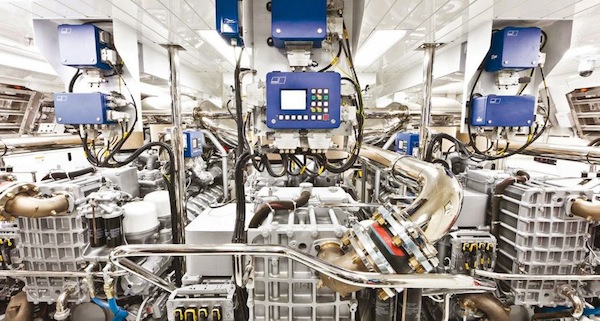ISO 14885 could save OEMs and yards money
A new harmonised standard covering safe installation of diesel engines on yachts under 500gt should prevent confusion arising over different class society rules. The next step, say the authors, is to have it included in MCA's next update to LY3…
The new standard harmonises disparate guidelines and should enable engine manufacturers and shipyards to plan engine safety well in advance, avoiding surprises and last minute case-by-case assessments and approvals by classification societies, whose stipulations on engine safety requirements can differ from each other.
“The issue of diesel engine safety was raised in the first place because it wasn’t always clear to builders exactly what the class societies wanted,” said Patrick Hemp, technical director of the International Council of Marine Industry Associations (ICOMIA). “The committee has sought a single standard that all of the classification societies can agree to.”
A representative from one of the marine engine manufacturers, who asked to remain unidentified, explained that they sometimes deal with up to nine different classification societies that have minor differences in the way, for example, an emergency cut-off switch is positioned and wired.
“Often a boatyard will choose a class society based on main structural requirements of the hull, so when it comes to a ‘semi-custom’ marine engine installation the frustration is in trying to get the details correct in order to gain approval,” he said.
“Depending on which class society superyacht builders have used, they’d have to fit the engine within one of a handful of different sets of safety constraints,” Hemp pointed out. “It has happened that the build team would find out at the last minute that, because the yard was using a different classification society for their latest build, they needed to go back and re-do parts of the installation to meet the safety requirements of the classification society overseeing the build.”
If flag administrations like MCA were to refer to the standard in an update to the LY3 code, a classification society could then type-approve the engine set-up with reference to that ISO standard. The hope is that this could reduce engine manufacturers’ costs since they would be able to build to a standard and not have to cope with the different requirements of the class societies, which of course has cost implications. This would then potentially provide savings for the shipyards.
“We now have one set of rules so we don’t have to have different specifications depending on which society is handling the classification of the yacht,” said Tom Tveitan, manager of laws and regulations within the global operations and core values department of AB Volvo Penta, who was the project manager for the development of the standard.
“Now that we have this standard, of course classification societies will still be involved, but instead of applying different guidelines from each society, the idea is they will be involved in approving that the installation has met the ISO standard,” Hemp says.
“Next, we have more work to do to get this standard working in real life, with people referring to it,” Tveitan said. “Our next stop is the MCA.”
The ISO Technical Committee responsible for Ship and Marine Technology Standards (TC 8) ‘Sub-Committee 12 for Large Yachts’ (TC 8/SC 12) developed the standard. This is the same committee that has, in recent years, published the standards on the measurement and assessment of the visual appearance of coatings (11347), the design of glazed openings (11336) and crane and gangway strength requirements (11209). They are currently looking at standards to cover weathertight doors, structural fire protection on FRP yachts, anchors and paint inspection methods.
“Quite a lot of hard work went into ISO 14885,” Hemp said. “More needs to be done by the yacht committee. Yacht steering systems for example need to be addressed because of how remote control is going these days. It’s a hot topic.”
Profile links
NEW: Sign up for SuperyachtNewsweek!
Get the latest weekly news, in-depth reports, intelligence, and strategic insights, delivered directly from The Superyacht Group's editors and market analysts.
Stay at the forefront of the superyacht industry with SuperyachtNewsweek
Click here to become part of The Superyacht Group community, and join us in our mission to make this industry accessible to all, and prosperous for the long-term. We are offering access to the superyacht industry’s most comprehensive and longstanding archive of business-critical information, as well as a comprehensive, real-time superyacht fleet database, for just £10 per month, because we are One Industry with One Mission. Sign up here.
NEW: Sign up for
SuperyachtNewsweek!
Get the latest weekly news, in-depth reports, intelligence, and strategic insights, delivered directly from The Superyacht Group's editors and market analysts.
Stay at the forefront of the superyacht industry with SuperyachtNewsweek




